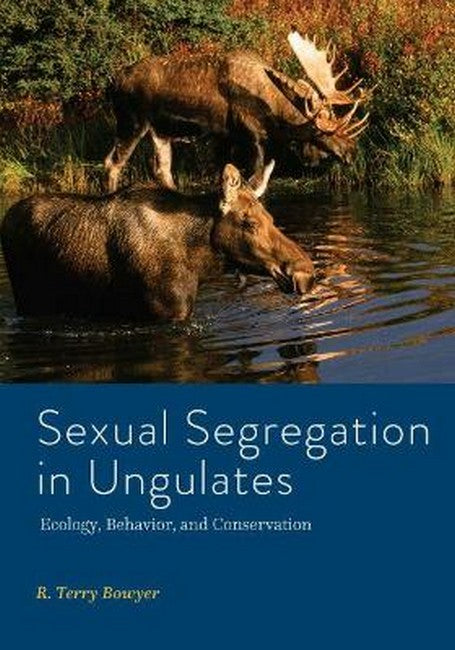R. Terry Bowyer (ESTACADA, OR) is Professor Emeritus of Wildlife Ecology and senior research scientist at the Institute of Arctic Biology of the University of Alaska Fairbanks. He has received the Distinguished Moose Biologist Award, the O. C. Wallmo Award for his studies of mule deer, and the C. Hart Merriam Award for his outstanding contributions to the science of mammalogy.
Request Academic Copy
Please copy the ISBN for submitting review copy form
Description
Preface Acknowledgments Chapter 1. Introduction and Overview Historical Perspectives Ungulate Characteristics and Relevant Aspects of Their Behavior, Ecology, and Conservation Mating Systems Predator Pits, Apparent Competition, and Territorial Regulation of Populations Sexual Segregation in Plants and Animals Chapter 2. Differences between the Sexes Definitions of Sexual Segregation Sexual Differences in Morphology, Physiology, and Foraging Behavior Sexual Dimorphism The Role of Resources and Predation Risk in Gregariousness Chapter 3. Temporospatial Patterns Defining Social Groups Temporal Patterns of Sexual Segregation and Aggregation Spatial Patterns of Sexual Segregation Chapter 4. Detection and Measurement Detecting Sexual Segregation Measuring Sexual Segregation Effects of Scale Chapter 5. Failed Concepts Setting Aside Rejected Hypotheses Social Hypotheses Ecological Hypotheses Limiting Overutilization of Habitats Chapter 6. The Role of Social Behavior Social Aggression and Sexual Affinities Activity Patterns The Social-Constraints Hypothesis Chapter 7. Ecological Aspects of Sexual Segregation Competition Hypothesis Gastrocentric Hypothesis Niche-Partitioning Hypothesis Predation-Risk Hypothesis Multiple Causations and Tradeoffs Chapter 8. Consequences of Sexual Segregation for Theory and Management Paternal Investment and Sexual Selection Population Dynamics Chapter 9. Failing to Consider Sexual Segregation Moose North American Elk White-Tailed Deer Bighorn Sheep Chapter 10. The Future Defining Sexual Segregation Why Is Sexual Segregation Overlooked? Future Questions and Directions Relevance to Other Organisms Literature Cited Index

